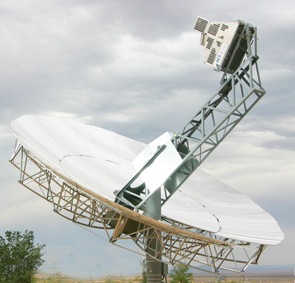UPDATE: Since this post was first published, the BLM has also given the nod to another major solar energy installation, the approximately 400-megawatt Ivanpah project, being developed in San Bernardino County by Oakland-based BrightSource Energy.
The federal Bureau of Land Management today issued its first approvals of major solar energy projects in California.

Tessera Energy’s 700-megawatt Ocotillo project, located in the Imperial Valley, about 100 miles east of San Diego, and a smaller photovoltaic (PV) project by San Ramon-based Chevron Corp., are both cleared to go forward.
The two projects set a precedent not just for California. On a call with reporters this morning, Department of Interior Secretary Ken Salazar called it a “historic day,” saying the two projects “bear the distinction of being the first large-scale solar energy projects ever approved for construction on our nation’s public lands.”
For projects being developed on federal land, BLM approval is the final hurdle before construction can begin. Big solar-thermal projects, which concentrate the Sun’s energy to make steam, also require approval from the California Energy Commission (photovoltaic projects, like the Chevron array, are under the eyes of the state’s Pubic Utilities Commission and county governments). State energy commissioners have approved seven major solar installations in the California desert since July. Several of these are still pending BLM approval.
BLM director Robert Abbey uses the catch phrase “smart from the start” to describe his agency’s new approach to site permitting, which he calls “streamlined without cutting corners.” Abbey says the Bureau is still sifting through a backlog of 180 pending applications, nationwide. He said his agency manages about 23 million acres “with solar potential,” across several western states, about half of that in California.
The Tessera project, shown in some CEC filings as SES Solar Two, could deliver more than 700 megawatts of solar-thermal power when completed late next year. It will occupy more than 6,000 acres of BLM land, and a few hundred acres of adjacent private land. Chevron’s Lucerne Valley project is significantly smaller, rated at 45 megawatts, with a footprint of about 400 acres in the Lucerne Valley of San Bernardino County.
Asked about opposition from environmentalists, Salazar said the projects had won support from several major organizations, including Defenders of Wildlife, the Sierra Club, The Wilderness Society and Natural Resources Defense Council (NRDC).
In a press release, NRDC attorney Johanna Wald wrote that: “the process provided valuable lessons that careful planning, siting and designing up front will lead to renewable projects that are smart from the start.”
Salazar told reporters that transmission lines are already available for all of the Chevron project’s output and a little less than half the expected output from Ocotillo, and that he looks forward to seeing “thousands of megawatts of renewable energy sprouting” over the next few years.
